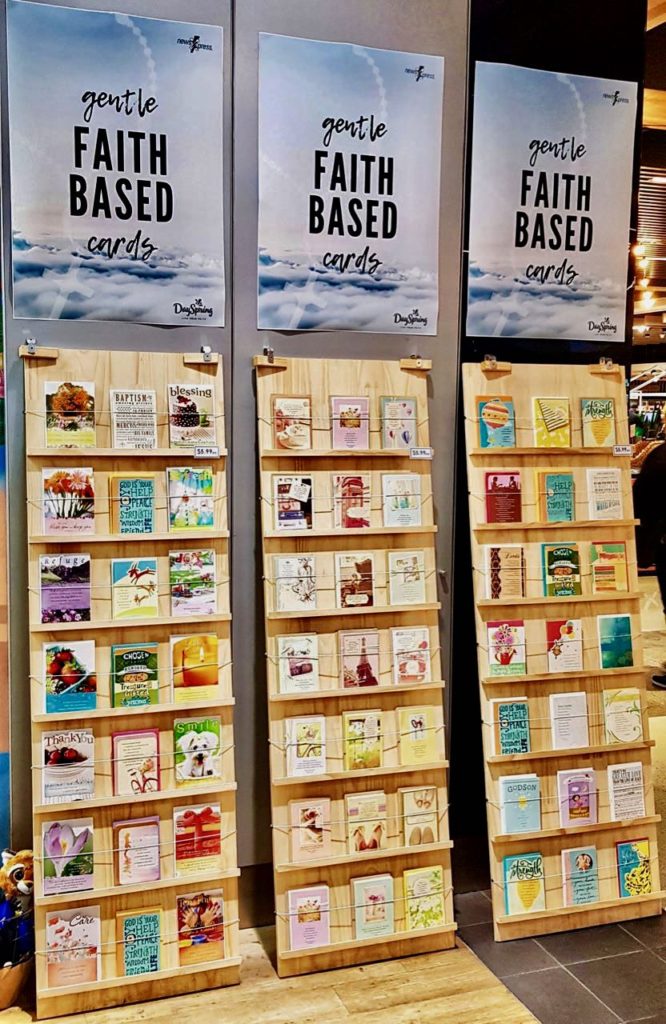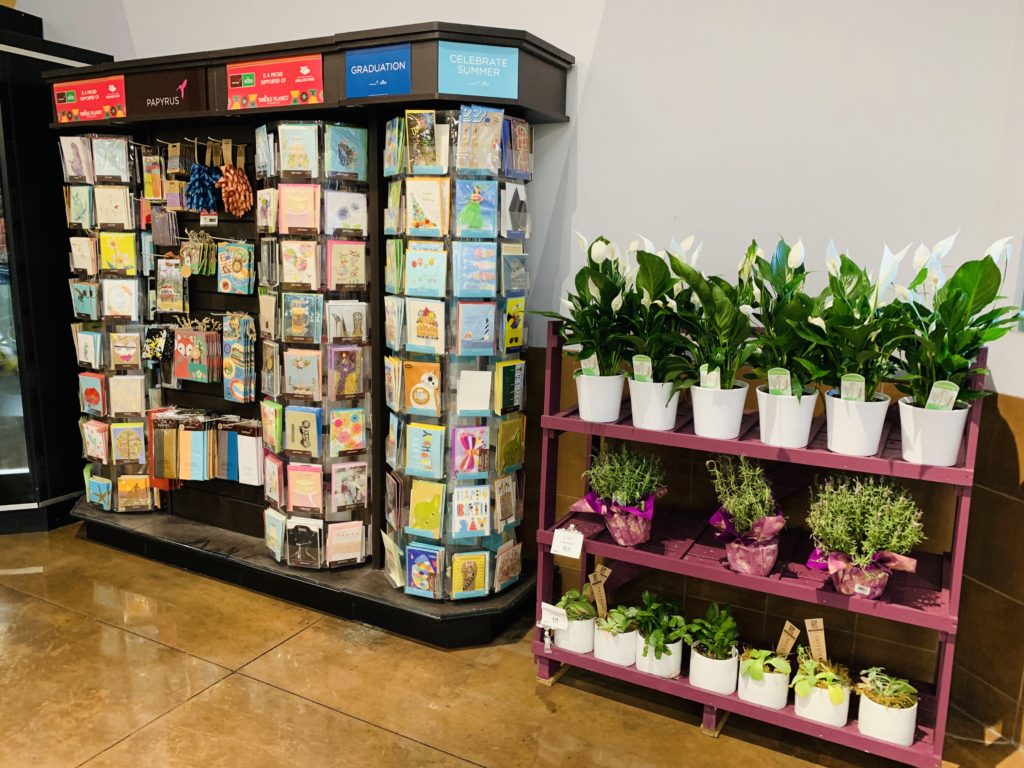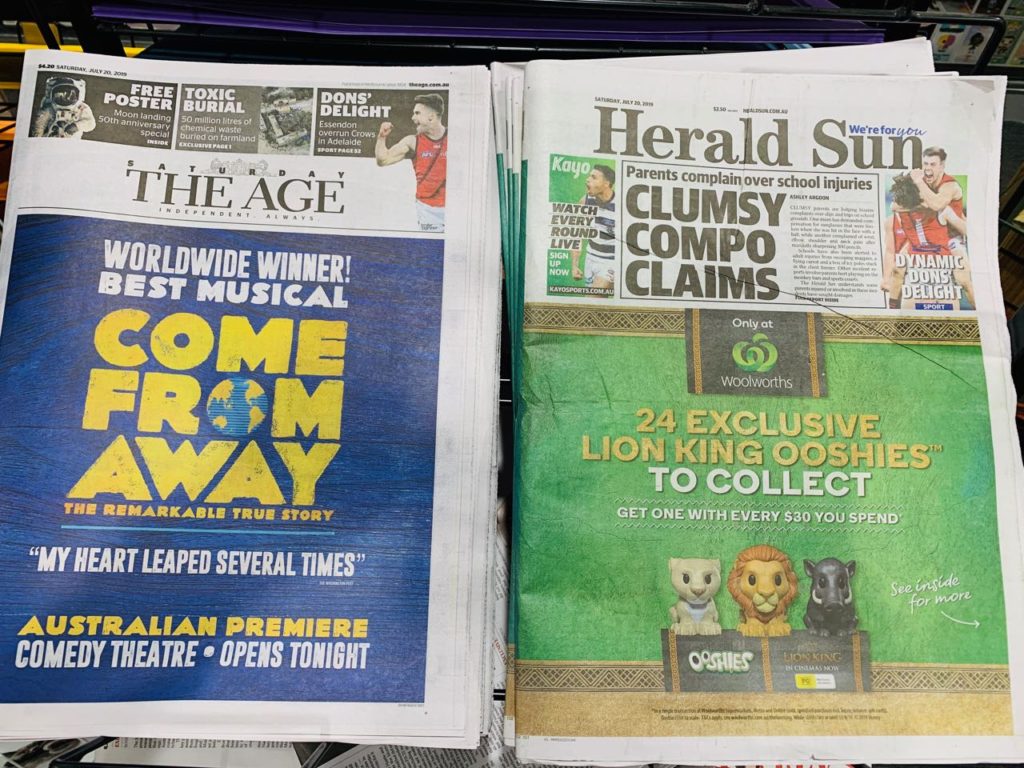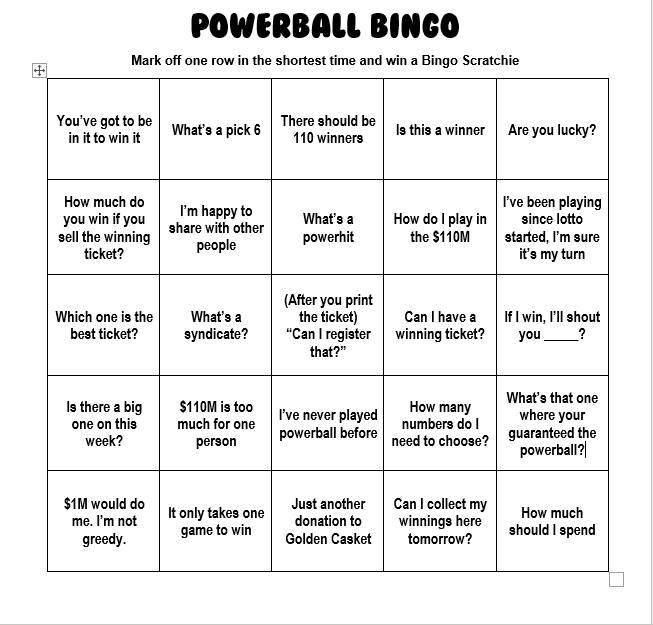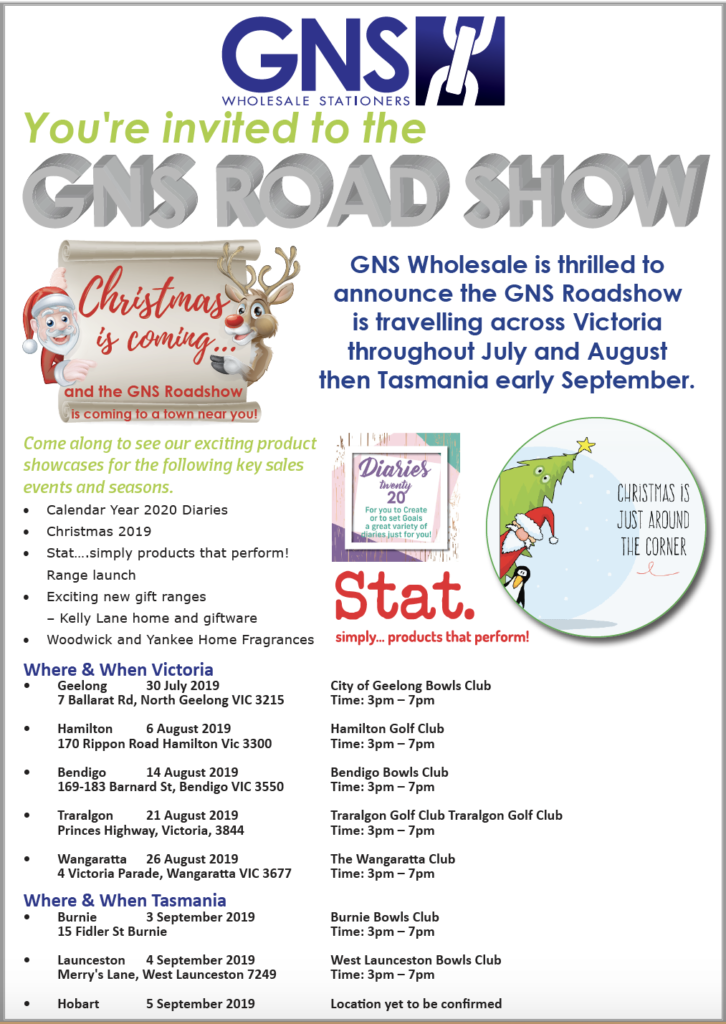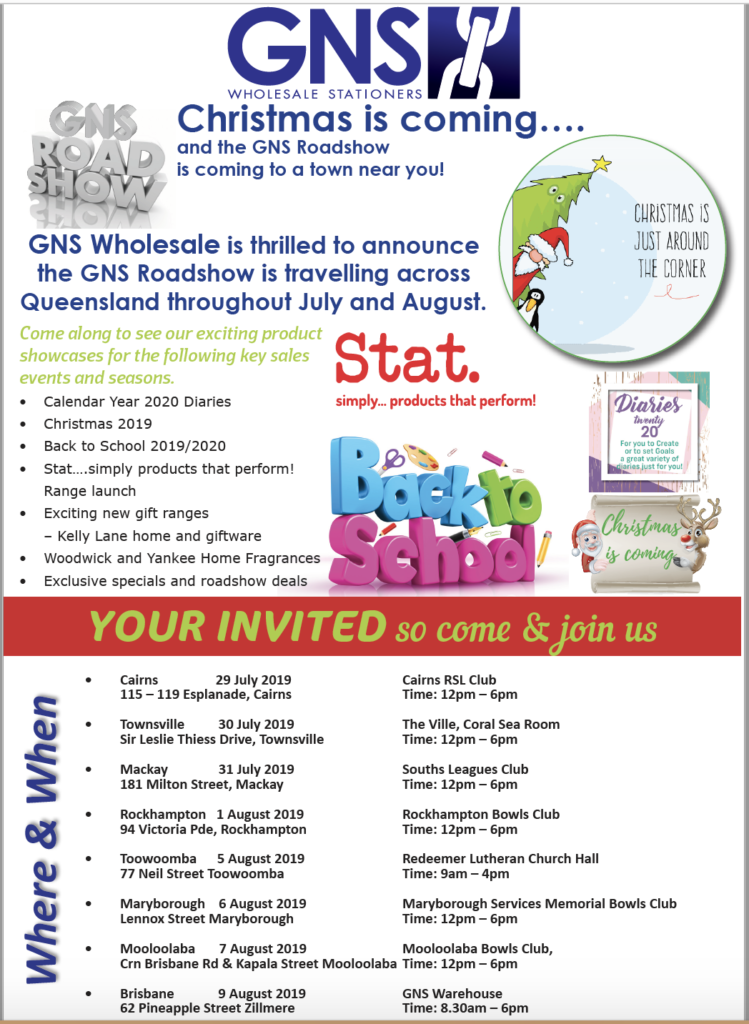End of financial year report from Lotterywest
Lotterywest sent a terrific email to its retailers on Sunday:
Thank you for your contribution to an amazing year for Lotterywest and the community organisations we support.
Thanks to you, players and staff this 2018-19 financial year final sales reached more than $985 million*, a 15 per cent increase on last year and a record year in Lotterywest’s history.
The record return is a testament to the hundreds of small, local businesses and retailers who are behind Lotterywest games.
It is another positive step following the new laws to ban online lottery betting organisations and the initiatives announced last month by the State Government to boost sales and create long-term sustainability for Lotterywest’s network of small retail businesses.
Retailer commissions on Lotterywest sales will increase by 10.8 per cent from December this year ensuring Lotterywest continues to pay the highest retailer commission in Australia.
This financial year Lotterywest’s jackpotting games went to $60 million or above, five times, making a significant contribution to our record sales.
Collectively, more than $736 million* was returned in the form of prizes and grants to our State.
We supported 613 not-for-profit community organisations and local government authorities, who received more than $102 million* in direct grants.
$180 million* was allocated through statutory grants which benefit WA public hospitals, sports and recreation, and culture and the arts.
Lottery winners received more than $454 million* in prize money and we met 58 Division One and 44 Scratch’n’Win Top Prize winners in the Winners Room.
These figures have been updated on the Lotterywest website if you wish to share them.
We’re extremely fortunate in Western Australia to have the only lottery in the nation, and one of the few in the world, that is State Government-owned and operated, where the profits raised go directly back to the community.
Check out the story hub to find out how grants have made a difference in your local area and share the news with customers.
We look forward to another fantastic year ahead.
Kind regards,
Premier Mark McGowan and Susan Hunt, PSM, Lotterywest CEO
If you think a high-interest unsecured loan is your only option…
I was talking with a small business retailer yesterday who had taken out an unsecured loan with one of the relatively new FinTech companies. The loan came at a repayment cost of $275.00 a day, fixed, for eighteen months, with an interest cost of 19%, charged upfront on the loan.
The retailer I was speaking with had encountered an unexpected challenge and needed to pause the loan for two weeks. The proposal put to them was to replace the old loan with a new loan at a higher cost. They felt it was unfair. Checking the terms an conditions, it is what they had agreed to.
No matter how tough things may seem, how bleak the future may look for your business, how much pressure is on you to settle debts, taking out a high interest unsecured loan through one of the many new FinTech companies is most likely not the answer. These loans come at a high interest cost, interest you cannot avoid regardless of whether you pay then loan off early. Negotiating a variation to the terms usually comes at a higher cost.
If you think this type of unsecured high-risk funding is the only option, pause and have someone else look at your situation. You need to determine if you are trading while insolvent.
For balance, I have seen people, reluctantly take out this type of loan and pay it off and keep trading. It was tough but they did it.
New report on theft in retail in Australia
The Age yesterday reported on a surge in theft.
A study of over 9000 Australian and New Zealand retailers has revealed the cost of theft in-store has now reached a “crisis point” for companies as shoplifters have become more brazen in recent years.
While the repor focusses on shoplifting, in my experience working eityh retailers, employee theft has a higher cost. This paragraph is telling…
The majority of respondents were large fashion, grocery and department retailers with 300 or more stores. For the 2018 financial year, those companies estimated crime-related losses of $3.37 billion, or 0.92 per cent of the region’s total retail revenue for the year.
The average cost of theft in small to medium business is 3% and more. This, considering the .92% noted above indicates the focus of the report is narrow. But then the report goes on to say employee theft was 22% of overall theft.
Maybe the disconnect is because the report pulled data from medium to large businesses whereas all data I have seen over the years has been from small businesses, single store businesses. In those, in my experience, employee theft costs around 70% of the total cost of theft.
Regardless of this latest report, theft is retail is a high cost for which retailers, customers and others in the supply chain pay.
read the report. It’s got useful information for any retailer.
Do you give newspaper customers a bag for their newspaper?
I am surprised when I see newspaper customers given a bag for their paper for two reasons – the waste of the plastic, k degradable but plastic nevertheless and, the cost for a micro margin product.
Supermarkets have trained their customers and charge those who forget. Why not newsagents? Maybe too many in our channel are soft on stopping this wastage.
Small is the competitive advantage of small business retailers
Small is beautiful. Small businesses are the backbone of the nation. Local businesses support the local economy.
We have heard the pitches from politicians, community leaders and small business owners themselves for years. Yet, many small business owners remain focussed on size. It is like big is better, big is what matters.
I have been at a retail conference this week looking at the future of retail and like most retail management conferences, there was no consideration of small, no appreciation that small is good. The whole focus was on what we (retailers) need to do to reach more people, sell more, make more … to get bigger. Size was lauded, it usually is.
I get that big businesses are obsessed with size. They have no choice, especially public companies. It is unfortunate that some suppliers to small businesses and some small business owners themselves get caught up in the chase of size and scale. I think this is a mistake. Getting bigger is not important. Getting better is far more important as that is where we can find value for us and our customers.
In retail especially there is no shame in being small. Indeed, small can be a valuable competitive advantage.
Small businesses can be more personal, more attuned to the local, able to move faster, able to be human.
Whereas big businesses are investing extraordinary amounts to use artificial intelligence to personalise contact and service delivery, small businesses can do this in a human way, a more authentic way.
The challenge is when a big business is trading in direct immediate and local competition to your small business. Their AI leveraging and scale mean that the labour cost per item sold will be considerably less than for the small business.
So, how can a small business that wants to stay small compete in this rapidly changing world? My advice is to be less of a target, look less like the big business competitor, copy them less, package goods so they cannot be price compared, change your shopper engagement so that it is not easily compared to big business … and, be lean, efficient, profit driven and attractive for reasons relevant to today.
At the conference this week one example used to drive growth was loyalty, points based loyalty, tracked through an app. It is very cool, customer friendly and easy to use. It drives sales for sure. If shoppers paused and thought about that company’s obsession with loyalty they would realise it is priced in the price of what they buy. Pushing back on the experience to shoppers who love the brand is difficult.
I think our best approach in small business retail is to know who/what we are and to live it at every opportunity. Be authentically small business and local, embracing every opportunity to demonstrate that. Buy local. Leverage local knowledge. Reward locally. Live locally. And, where possible, push back open big business tactics.
Supermarkets value cards
You only have to look at Coles and Woolworths to understand the importance of a card offer to both chains. While they continue to adjust their offering, neither has taken there approach of the Whole Foods group in the us, yet. This type of display is common just inside their main entry door.
This is a simple pitch, deliberately placed with flowers – as we see in Coles today with at least one birthday card stand placed next to flowers near an entrance / exit.
I guess what interests me at Whole Foods is the bigger range of cards in this location.
Stranger Things licence as strong as Harry Potter
 There as many online searches in Australia this year for Stranger Things as there are for Harry Potter. Both are sitting at around 120,000 searches according to the SEMRush keyword search analysis tool. Stranger Things is leading licence related searches, beating often considered stellar brands such as Lego, Barbie and Toy Story.
There as many online searches in Australia this year for Stranger Things as there are for Harry Potter. Both are sitting at around 120,000 searches according to the SEMRush keyword search analysis tool. Stranger Things is leading licence related searches, beating often considered stellar brands such as Lego, Barbie and Toy Story.
This is interesting me today because most newsagents would not have Stranger Things products in-store, missing the opportunity of the licence traffic and the new traffic for a business from which the business can benefit into other product categories.
In my own shops we have been in the Stranger Things space since the Netflix TV series launched. It has been good for us and continues to perform well.
This space of licences, especially TV series licences in this world of streaming, can be challenging. It is critical to connect with people who are aware and can guide ranging decisions.
If you are concerned about attracting millennials and Gen Z, being on top of licences wold be a good start.
No, all employers are not the same
The reports of underpayment of wages at 7-Eleven, George Calombaris’ restaurants, Michael Hill Jewellers and more have put a spotlight on the treatment of employees. While this is reasonable, it has come with plenty of commentary that limps all employers into one basket of demons.
No, all employers are notthe same. Just as all employees are notthe same.
It frustrates me when I see unions on social media raging against employers, without qualification. As an employer, I feel they are including me in their targeted attack, yet I know I have not misbehaved.
Employer groups are the same, targeting unions / employees in generalised attacks.
Neither approach is helpful.
Unions should stop lionising employers and employer groups should stop lionising workers.
There are laws and awards in Australia affording protection for employees. Our obligations as employers is to meet the obligations in law and the awards. Yes, it is complex and a challenging moving feast. However, it is what it is. Thanks to 7-Eleven, there is even more focus on this.
What 7-Eleven, George Calombaris’ restaurants, Michael Hill Jewellers and others have done is wrong. Their behaviour is not my behaviour, nor the behaviour of thousands of small business retail owners.
The unions need to recognise this, to qualify their comments and to work with the businesses that do good and meet their obligations at law. Unions and employer groups need to retreat from the class warfare of worker versus boss and boss versus worker.
Employer groups should call out this misbehaviour. They should speak up for the law. Silence is unhelpful.
No one wins from this nonsense.
There is another side to these issues too, relating to the connections between businesses in a channel or group.
The challenge for small business retailers in a specific channel or retailers trading under a banner group is that misbehaviour by one can put others in the channel or group under the spotlight, causing many hours to be lost to targeted audits. This is why people owning businesses in a defined channel or group have an obligation to others in the same situation.
There is no grey area here. The award is easily accessible. Understanding your obligations as an employer is straightforward. You can’t pass the buck. Do the work, understand your obligations and ensure that your decisions do not add risk to others in your business community.
The valuable counter position
 The AFL team emblems we have sold okay from their usual position in the shop.
The AFL team emblems we have sold okay from their usual position in the shop.
Place them on the counter and people add them to their purchase – newspaper customers, card customers and more. Love for an AFL team gets people to open their wallets in AFL crazy Melbourne from what I can see.
It helps that these products can be posted – making them an easy gift.
I see terrific value in placing items at the counter that are not identified as traditional newsagency lines.
We need to embrace every opportunity to push back on the shopper perception that we built up for decades.
Harry Potter products #2 in year on year growth
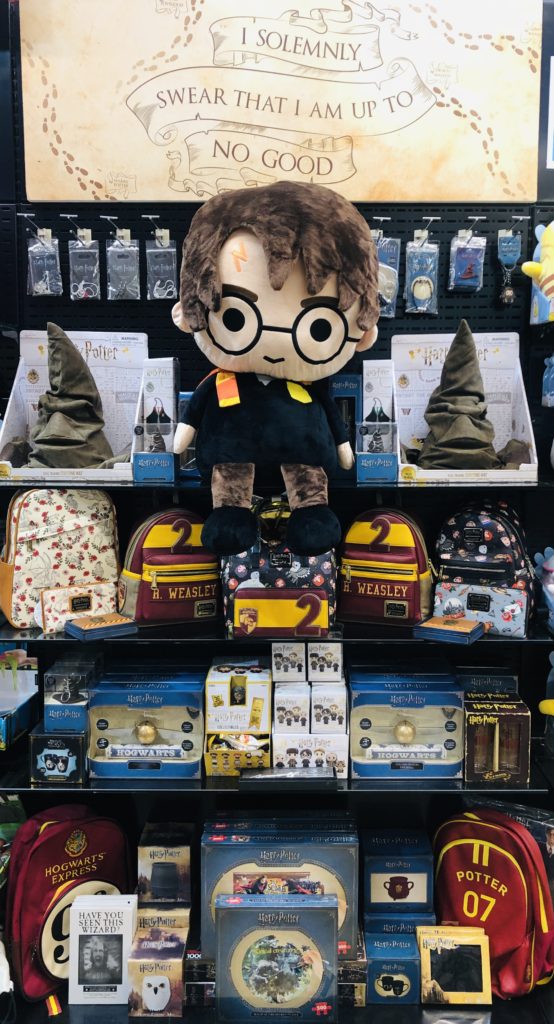 Toy performance benchmark results for the year to the end of May 2019 indicate Harry Potter as the second fastest growingng licence in terms of revenue contribution in toys.
Toy performance benchmark results for the year to the end of May 2019 indicate Harry Potter as the second fastest growingng licence in terms of revenue contribution in toys.
I have written here before about Harry Potter products and their success in attracting new net traffic to the business. We have been in this space for several years and it remains strong. It encourages return visits as well as attracting new customers. The products work well on social media too.
#1 year on year is Toy Story. That is due to the new movie.
To me, the success of Harry Potter is interesting in that it is a sustained brand and year on year growth for a sustained brand is more useful to retailers playing a longer game than the next big thing that will bust in months.
The photo shows one of our recent displays. Range changes regularly as new product come on stream.
Full financial year newsagency sales benchmark study under way
Earlier this week I invited newsagents to provide two years of sales data, for a thorough newsagency sales benchmark study. I am please to say I have already received data from forty-five businesses. I am hoping to reach 150.
Here is the text of the email calling for submissions:
FY2018/19 NEWSAGENCY SALES BENCHMARK STUDY.
I invite you to provide data for a whole of financial year newsagency sales performance benchmark study. The benchmark provides data against which you can compare your business performance. Click here for my last report.How to participate.
- Please run a Monthly Sales Comparison Report for 01/07/2018 – 30/06/2019 compared to 01/07/2017 – 30/06/2018.
- Tick the category box. IMPORTANT.
- Tick to exclude home delivery and sub agent data.
- DO NOT tick the supplier box.
- Preview the report on the screen. Save as a PDF and email this to me at mark@towersystems.com.au.
- Read the report yourself and see what it shows you about your business.
I will email the results to all participating newsagents and publish the results on theAustralian Newsagency Blog as a service for all newsagents.
I am doing a whole of financial year study as this provides a more useful look at performance and trends than quarterly.
My work with this channel goes back to 1981 when I wrote newsagency software to manage newspaper home deliveries. That software evolved into Point of Sale software and has been rewritten as software technology has changed.
I own and run three newsagencies. Over the years I have had three others. I own newsXpress, the newsagency marketing group.
Tower Systems serves 1,750+ newsagents with best practice newsagency software, We are thrilled to note that our customer base is growing. We welcomed 37 newsagency businesses as new customers in the last twelve months. Overall, Tower Systems serves in excess of 3,500 small business retailers.
Why are there so many empty shops in Australia?
Talk to any small business retailer and they will have stories about empty shops in their area that are having a negative impact on their business.
In shopping centres, suburban high streets and country town main roads, there are plenty of empty shops.
Some have been empty for years.
Empty shops make a shopping centre or area feel unpopular, making the task of attracting shoppers harder for remaining retailers.
Some councils have been innovative in addressing the vacant retail space challenge by opening them to local makers and artists. Most councils, however, have not.
Why are there so many empty shops? Talk to retailers and they will blame landlords for rents that are too high. Talk to economists and others expert in retail property space as a ratio of population and they will say that Australia has too much retail space. Talk to the folks in some specific towns and they will blame the main street empty spaces on the new mall that has opened just outside town. Talk to almost anyone and they will blame online. Talk to some landlords and they will say retailers are not innovative enough.
As with any contentious issue that has opposing vested interests, it is hard to get to the truth of the situation.
For what it is worth, my opinion is that the answer to the question lies in a mixture of the reasons offered above.
I do think we have too much retail space in Australia. Rent is among the highest in the world. Retail is not that innovative. People are shopping online for convenience. So, yes, I am hedging my bets.
That said, the why does not matter as much as what to do with them.
Occasionally, you can find a pragmatic landlord who is happy to have a space filled at a lower rent than sit empty for a year or more. I think we need more pragmatic landlords.
Occasionally, we see small business retailers burst out of what has been traditional for their type of business and create something genuinely innovative, which is embraced by local shoppers. We need more of this.
Occasionally, we see empty shops torn down and the space used for something difference. We need to see much more of this.
The challenge for small business retailers today with empty shops nearby is how to deal with the stench of those empty shops.
If your landlord has those shops too and there is one next to you, ask them if you can use the space for display. To me, that would be a win win for you both.
If the shops are not from your landlord, the most obvious response will be to be louder and bigger from your premises. By louder, I mean more events to attract shoppers, give people more reason to come to you.
The best way to deal with online is to be online yourself, with a compelling offer, probably under a brand that is not your shop brand, seeking out shoppers far from your shop location.
The alternative to action is to complain because, yeah, complaining achieves a lot … not.
Empty shops are a problem in Australia. How we deal with that in our own retail businesses comes down to us and the actions we take.
Hmm, which Moon landing product to sell
- One Giant Leap from News Corp from which I make 78.4 cents.
- A Moon landing commemorative coin from which I make $48.00.
Okay, option one is sale or return and could sell in higher volume. However, option is limited-edition, rare and based on experience already is an easy sell.
In fact, I expect to sell six of the coins and make $288.00, which equals 367 of One Giant Leap. I expect to sell only ten or fifteen of these.
I get why commemorative booklets are produced. However, the numbers don’t work for newsagents.
GNS road shows
GNS is hosting more roadshows, offering newsagents opportunities to see products and talk face to face with representatives from the newsagent owned business.
This approach of taking products closer to retailers rather than larger capital city focussed trade trade shows respects the geographic challenges of Australia.
How are newspaper sales in cafes?
With Starbucks announcing they are getting out of selling newspapers, it is timely to ask Aussie newsagents what their newspaper sales to cafes are like. While it was a trend years ago, I suspect that sales today are minimal.
One newsagent I spoke too a couple of weeks ago said they had closed several sub accounts with cafes because the sales volume was too low to justify the work.
If you have subagent cafes, how are your. newspaper sales to cafes?
Timely reminder on pay rates and entitlements
The news last week that the new CEO of Michael Hill jewellers identified a $25M shortfall in employee pay and entitlements is a timely reminder to all retail business owners…
- Check employee classifications and ensure they match their tasks.
- Check rates of pay for each employee to ensure they are correct.
- Check entitlements for each employee and enquire they are correct.
Time checking these today could avoid penalties down the track. Government data matching makes catching mistakes and misbehaviour easier for the regulators.
The areas noted above are part of the provisions of the vulnerable workers legislation.
Newsagency management tip for leveraging the Powerball $110M jackpot
Big lottery jackpots can be a challenge in that they can suck cash out of the local economy that might otherwise have been useful for spending of products in your shop. They can also be beneficial in bringing in people you have not seen before. The key is what you do with the new traffic.
Here are some ideas for leveraging big lottery jackpot traffic:
- Map the route. Sketch out your floor layout and mark the route most jackpot customers will travel. This shows you the areas of your shop where you need to focus, where to place impulse purchase lines.
- Make them walk through it. Create a fresh environment of products through which lottery shoppers to walk. This is where you pitch what you do that is different. It is crucial shoppers walking through the front part of the shop feel and see the change.
- Staff for it. Consider hiring extra staff to manage traffic and have someone on the floor playing with products, pricing, working with products – near the lottery counter. Give people things to look at and therefore contemplate purchasing. We know from experience that activity by staff on the shop floor drives sales.
- Pitch at the door. As they enter and, crucially, as they leave. Show them products they would not expect you to have in the shop. Make it easy for people to buy these products.
- Pitch at the counter. Stand where your lottery customers will stand. Look at what they will see. make sure your messages are clean, simple and engaging. Everything they can see should be about getting them to spend money with you.
- Have fun.
The value of any lottery jackpot to your business beyond lottery commission depends on what you do.
How businesses do business is fundamentally changing, are you ready?
Back in the day in retail doing business was all about face to face contact in-store or a nearby coffee shops. Relationships mattered. This is why suppliers and service providers invested in sales teams.
Good sales people could get a meeting and the required business from face to face interaction.
Today, things are different. Retail businesses run with less staff and management hours in the business. More decisions are made outside the business, on the road, while at a second job or from home. More decisions are being made and business transacted without any face to face discussion. Even phone contact matters less.
I want to look at what is happening here from the perspective of how we do business with our customers in our retail shops. More and more transactional business is done without live human contact. There is the obvious route of online (web) for sure. However, there is also business done through message platforms, email and elsewhere, where there is no face to face contact with shoppers.
Are you setup for this? Are you connecting with people through social media and able to sell to them through here? Are you timely in handling emails? Are you prepared with images and information sheets on products you sell so you can sell without face to face?
Without a doubt more and more retail business is being done outside of shops. We in small business retail need to configure and equip our businesses to be able to do this. This is part about technology, part about business mindset and part about availability.
Too often, I see small business retailers express anger and frustration at obvious baddies – landlords, employees, customers and more – for poor business performance. Right now, with how the conduct of business is shifting, we need to look at ourselves and how we conduct business. We need to make sure that we are meeting potential customers where they are. We need to realise that more often than ever before, that is outside and, sometimes, far away from our shop. We need to do this when those customers want. Often times, that is when we are closed.
This is the new normal of retail.
EFTPOS / ATM outage hurting newsagents, could hurt $80M Powerball
This afternoon was going to be big for many newsagents with Powerball at $80M. Unfortunately for many last-minute punters who rely on using their debit and cards for payment, an EFTPOS outage that hit mid afternoon is a barrier to getting a ticket. This will hurt retailers, plenty of whom rostered on extra staff for the traffic surge.
The banks point to Telstra. Telstra has acknowledged a problem. That does not fix it.
Being a Thursday, a pay day for plenty, complicates things.
Within our channel, the loss of Powerball sales from mid afternoon to close will be at a cost. Maybe the lottery gods will smile upon everyone and delivery a jackpot to next week. $100M would kick things along.
Newsagency marketing challenge: sympathy cards
 You don’t often see retailers, including newsagents, actively promoting sympathy cards. Maybe, they don’t want to be seen to be promoting or making money off of death. Maybe they don’t like what they have to sell.
You don’t often see retailers, including newsagents, actively promoting sympathy cards. Maybe, they don’t want to be seen to be promoting or making money off of death. Maybe they don’t like what they have to sell.
Sympathy is a card caption where the card itself is critical to striking the right tone the card giver wants for the situation. This is why range is critical and why people take more time choosing a sympathy card than some other captions.
The thing with expressing sympathy is … it is hard to do, hard to get just right. This is where we retailers play a key role, if we engage.
Too often, the only marketing activity newsagents engage in with sympathy cards is having them in the appropriate pockets in the card department. While this is okay for serving destination shoppers, it misses the opportunity with those who might otherwise, this time, not give a card.
For the sympathy category to help people express themselves, we need to reach outside the card department, in-store and elsewhere, and shine a light on expressing sympathy,. showing different cards, difference voices, through which ti can be done. We need to do this in a way that is respectful yet retail outcome focussed – we are in business after all.
Here his one way I ddi this with newsXpress recently, using video, for social media…
- 1
- 2
